In the Streets of Rome With Pier Paolo Pasolini
His bracing debut novel, Boys Alive, documents the hard and loose lives of vagabonds in the Italian capital’s underbelly.
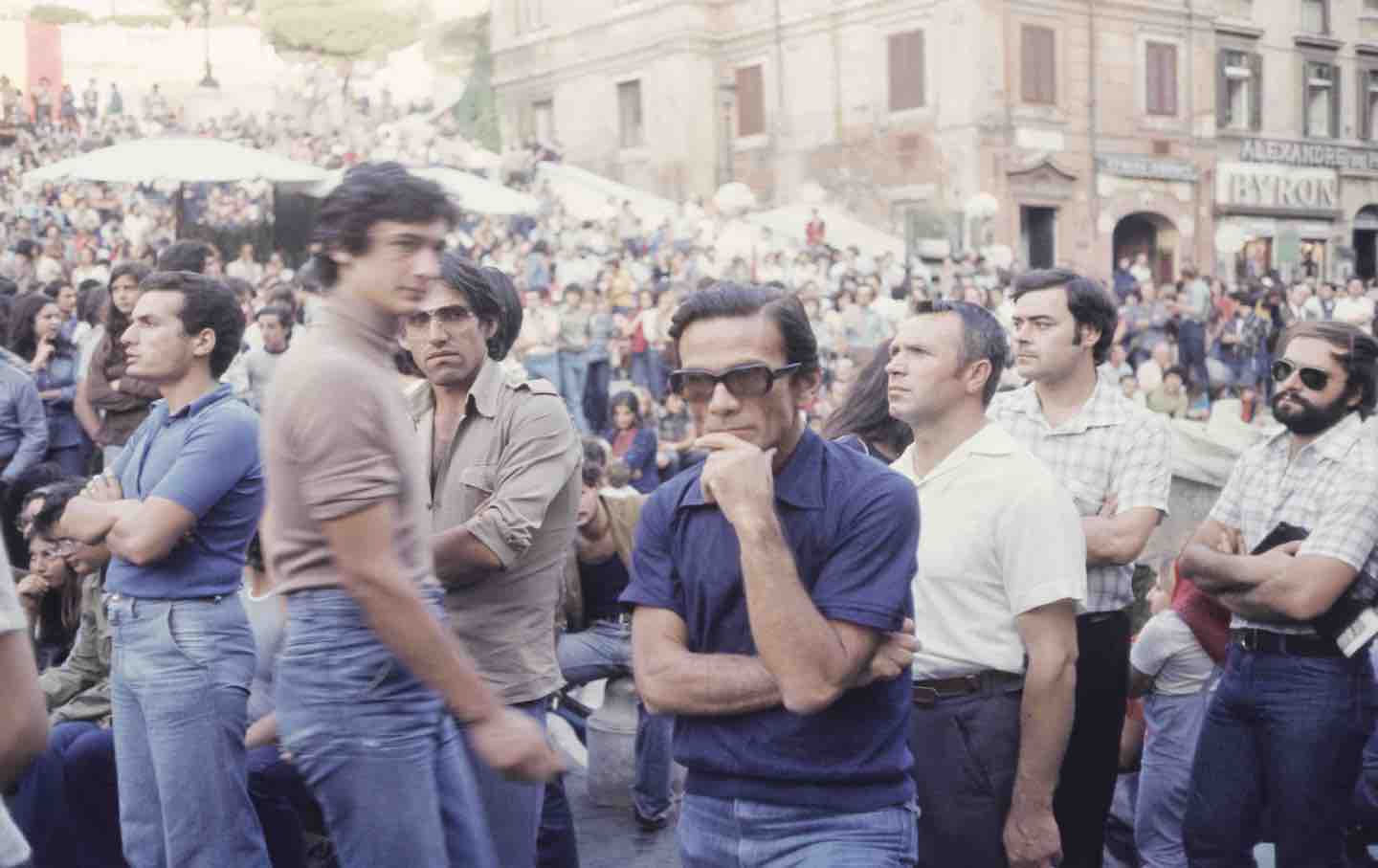
Pier Paolo Pasolini at a demonstration in Rome, 1970.
(Photo by Universal Archive / Universal Images Group via Getty Images)Giuseppe “Pino” Pelosi died in 2017, in Rome, of a long-festering cancer at the age of 59. In the final decade of his life, he worked as a garbage collector in the capital, a job he was given by the Italian state when it had finally had enough of his lifelong habits of robbery, drug dealing, and various other petty crimes. Rather than lock him up yet again, the state bound Pelosi with invisible shackles—to a job, a service, he did not choose for himself. For someone like Pelosi, prison might have been preferable to the monotony of serving his fellow citizens: At a very young age, he had escaped the poverty-stricken villages of postwar Italy to live a life of banditry, spending his youth as one of the ragazzi di vita, or “boys of life,” street kids who plied their trade (thievery, sex work, or any other hustle they came across) in the country’s crumbling cities. It was a grim existence. But it wasn’t without romance: In a time defined by the stark contrast between the glitz of the then-ascendent consumer ideology and the destitution that still plagued much of Italian society, these street kids seemed the very image of freedom, even if it was the freedom of the outcast, anonymous and unwanted. Pelosi may have passed through life unnoticed had he not been stopped, late one night in November 1975, while driving at breakneck speed in a stolen gray Alfa Romeo.
Books in review
Boys Alive
Buy this bookThe car belonged to Pier Paolo Pasolini, the famous (and then-ubiquitous) writer and filmmaker, who in the course of his career had been a thorn for all sides: a Marxist who criticized the left, a Catholic who condemned the clergy, a cultural nostalgist who worked tirelessly to expose the hypocrisies of society, traditional and bourgeois alike. Not long after recovering his stolen car and arresting Pelosi, the police discovered Pasolini’s body, partially burned and beaten nearly beyond recognition, on a beach in Ostia, a small town on the outskirts of Rome where he kept a small cottage. Pelosi, then only 17, admitted to the murder and spent the next decade in prison.
Pasolini’s death has been the subject of endless speculation as well as multiple investigations. Early theories suggested a gangland assassination, before the most widely accepted story took hold: an older man aggressively pursuing an adolescent for sex, the latter responding with extreme violence. Pelosi himself proffered this explanation by way of self-defense, until he didn’t. At one point, there were other assailants, then there weren’t, then there were again. Eventually, Pelosi retracted his confession entirely, admitting in 2005 that it had been extracted by coercion and threats of violence, and that the actual murderers targeted Pasolini not for his homosexuality but for his communism, hurling not homophobic slurs but accusations of treachery and subversion.
In the last years of his life, Pasolini had been the most prominent newspaper columnist in Italy, a perch from which he made increasingly specific allegations of corruption and collusion within a clandestine web comprising government, police, organized crime, and intelligence services, both foreign and domestic. He had begun work on a documentary on the 1969 bombing of Milan’s Piazza Fontana, which killed 17 people and wounded 88 and was carried out by Ordine Nuovo, the far-right terrorist group with strong ties to Italian intelligence. At the time of his death, Pasolini was finishing a long novel—the manuscript was over 600 pages—that would expose a vast network of the powerful and the rapacious who were undermining civil society at home and abroad.
What may sound like the stuff of conspiracy theory has now been largely confirmed, if not in every detail. In what is now called the “Years of Lead,” an already frayed Italian society was shredded by bombings, assassinations, and false-flag attacks, some of them funded, organized, and even carried out by elements within the state itself. Thirty years after such conspiracies began to come to light, a new inquiry into Pasolini’s murder has been opened.
In a curious way, “Pino” Pelosi is a representative figure for his time, as much for his vagabond lifestyle as for the way it cut through the cloud of secrecy and violence that ruled the country in which he lived—the fringe of la dolce vita, where the fascists lay in wait. And it is darkly serendipitous that he should have been ripped from anonymity in connection with the death of Pasolini. The author’s first brush with infamy came in 1949, when he was charged with indecency after being caught in a compromising position with several teenage boys after a night of drinking. Pasolini’s name was dragged through the mud by the mainstream press, and he was expelled from the Communist Party, but he remained defiant—and defiantly idiosyncratic—citing in his defense André Gide on the necessity of the erotic in literature. Six years later, in 1955, Pasolini released his debut novel, a bold portrait of a group of young hustlers in chaotic and criminal postwar Rome. Ragazzi di Vita, the title, has been subject to various translations over the years, including The Street Kids, Hustlers, and now, by Tim Parks, Boys Alive. Its boys are roughly interchangeable, known only by their first names or by nicknames: Riccetto (Curly), Agnolo, Marcello, Amerigo, etc. There might as well be one called Pino.
Pasolini’s rendering of these boys is undeniably affectionate, and he refuses to make apologies for their rampant criminality, even as he follows several of them to the dead-end conclusion of their dangerous way of life, sticky ends all—prison, murder, suicide. The novel is composed in Romanaccio, the rough-and-ready, slang-strewn dialect of the Roman underclass that offended many of Pasolini’s bourgeois readers, who had assumed such talk had gone extinct. What makes Pasolini’s vision so keen, so incisive, is precisely his unwillingness to isolate his characters and their decisions apart from the world in which they live and the materials they are required to draw on.
There is something particularly insightful about this subtle criticism of modern, middle-class universalism, which perfected the art of ignoring inconvenient facts, inconvenient people. Yes, Pasolini says in Boys Alive, this is a life of crime, but our world is one of criminality, whether or not you are willing to see it. The difference, then, between an upstanding citizen and a delinquent often comes down to luck or a matter of perspective. It’s a grim outlook if you have held out hope that justice, or even fairness, could be found in maintaining social order. If, however, that hope has already been dashed, understanding the arbitrary election of “lawful” and “unlawful” is the beginning of liberation—above all, of the ability to see that the seed of redemption is contained in that which the order of the day condemns.
In both his writing and his filmmaking, Pasolini made a career of excoriating Italian society, culminating in 1975’s notorious Salò, or the 120 Days of Sodom, which in its gruesome depiction of a sadistic elite stands as one of the most incisive analyses of fascist psychology. In that film, based on the novel by the Marquis de Sade, wealthy libertines kidnap a group of teenagers and, over the course of four months, torture them to death by ritualized psychosexual methods. Yet, however elaborate the ceremonies of degradation become, the camera insists on the viewers’ attention to the victims’ corporality, their incorrigible flesh, the site of pain as well as resistance, which the fascists in their avaricious ignorance can only consume.
It’s a testament to Pasolini’s hatred of capitalism, which he sees as little more than a continuation of fascist impulses, as well as his idiosyncratic devotion to Catholic sacramentalism, which sees the love of God expressed not only in idealized spirituality but in the very stuff of life, in dirt and stone and organic matter, as well as sweat and saliva, semen, shit, and blood. It was this devotion (along with a good bit of romanticism, to say nothing of his pleasure-seeking) that drew Pasolini toward the fringes of society; it’s why his fiction was obsessed with practices that escape the machine of consumption, breaking bourgeois social bonds in pursuit of a thrill or simply a place to sleep. The deepest, if most unexpected, source of grace, Pasolini insisted, is to be found in the very muck of the city: The boys may need saving—we all do—but they do not need sanitizing.
The group in Boys Alive is headed up (in a fittingly loose sort of way) by Riccetto, whom we first encounter when he has just been confirmed, the Catholic sacrament affirming one’s entrance into spiritual adulthood. Riccetto leaves the church and joins a large crowd looting a warehouse, a scene worthy of Scorsese or even Ferrara. The book’s episodes are defined by this deft weaving in and out of social acceptability, the ragazzi capable, perhaps more than anyone else, of presenting themselves for approval, even redemption, until they prefer to do otherwise. The narrative, such as it is, follows suit.
In a representative scene that takes cynicism and sincerity in turns, a pair of the boys lust after two girls they see, their longing rendered in all the lasciviousness of teenagers who might not know what to do if they got what they wanted. The girls may be sex workers, the boys speculate in crass, dismissive terms, as though they themselves don’t ply that trade when it suits them. In moments like these, it becomes difficult to care about these boys, much less like them. But then they go for a swim in the Tiber to cool off, and as Pasolini’s prose becomes quiet, almost luxuriantly so, we are suddenly transported back to our own youth, before we learned that our misdeeds stay with us, when immersion in cool water was enough to start the day over.
Popular
“swipe left below to view more authors”Swipe →The flurry of action continues on, even if it’s the action of misspent youth, easy to dismiss only when you’re out of it, only when you forget how much of it really did, for better or worse, mean something. It is easy to forget, amid all the slacking off, the morally questionable diversions, that it was in those moments that desire was born, grief first encountered, and souls took shape. It is also when we were at our most vulnerable to the systems into which we have been born, and whose operation we have no say in. However savvy, however worldly-wise Pasolini’s boys are, they are forever weaving through society’s nets, never knowing when one may come down and tighten around them.
In one scene, a hungry Riccetto passes through a market, grabbing a few pieces of fruit here and there, before he is caught trying to steal a slice of Gruyère from a cheesemonger. A crowd forms; Riccetto is assaulted by the vendor, but is granted a little leniency and, upon returning the cheese, allowed to go. Shaken, exhausted, he makes his way out of the market toward the landing of an apartment where he usually sleeps, thinking he can find some peace there. But Rome has other plans for him.
Not half an hour could have passed—just enough for the janitor to call them and for them to get there—and Riccetto was being woken by the kicks of two policemen’s boots. In brief, the apartment had been burgled that night, which was why the door had been open. Poor Riccetto, waking up from God knows what dreams, of eating in a restaurant, or sleeping in a bed, sat up rubbing his eyes, and, completely bewildered, stumbled down the stairs after the policemen. “Why’ve they arrested me?” he wondered, still not entirely awake. “Weird.” They took him to Porta Portese and sentenced him to almost three years—so he would be stuck inside till the spring of 1950—to teach him right from wrong, obviously.
It’s a terrible temptation to conclude that these boys are doomed. And yet, however aimless its characters’ daily activities, however poignantly their pointlessness is rendered, however helpless they ultimately are in the face of forces beyond even their recognition, the heart of Boys Alive is not resentment or even rebellion but a quiet faith in life itself and the almost incomprehensible powers that sustain it. In living so close to the raw material of life—pain, desire, fear, and hope—Pasolini sees in these boys’ chaotic existence every reason to reject the cheap optimism of bourgeois consumerism. He sees in their way of life the burning ember where human and divine meet. It’s a dangerous gambit—look how the net eventually closed around him, with one of his subjects used as a pawn in the game that killed him—but it’s what kept Pasolini’s voice from pure pessimism throughout his career, even as it was the fuel and guiding principle for his most scathing attacks, his most radical deviations from every expectation, his most terrifying risks: the freedom of the ragazzi, and their grace.
Can we count on you?
In the coming election, the fate of our democracy and fundamental civil rights are on the ballot. The conservative architects of Project 2025 are scheming to institutionalize Donald Trump’s authoritarian vision across all levels of government if he should win.
We’ve already seen events that fill us with both dread and cautious optimism—throughout it all, The Nation has been a bulwark against misinformation and an advocate for bold, principled perspectives. Our dedicated writers have sat down with Kamala Harris and Bernie Sanders for interviews, unpacked the shallow right-wing populist appeals of J.D. Vance, and debated the pathway for a Democratic victory in November.
Stories like these and the one you just read are vital at this critical juncture in our country’s history. Now more than ever, we need clear-eyed and deeply reported independent journalism to make sense of the headlines and sort fact from fiction. Donate today and join our 160-year legacy of speaking truth to power and uplifting the voices of grassroots advocates.
Throughout 2024 and what is likely the defining election of our lifetimes, we need your support to continue publishing the insightful journalism you rely on.
Thank you,
The Editors of The Nation
More from The Nation
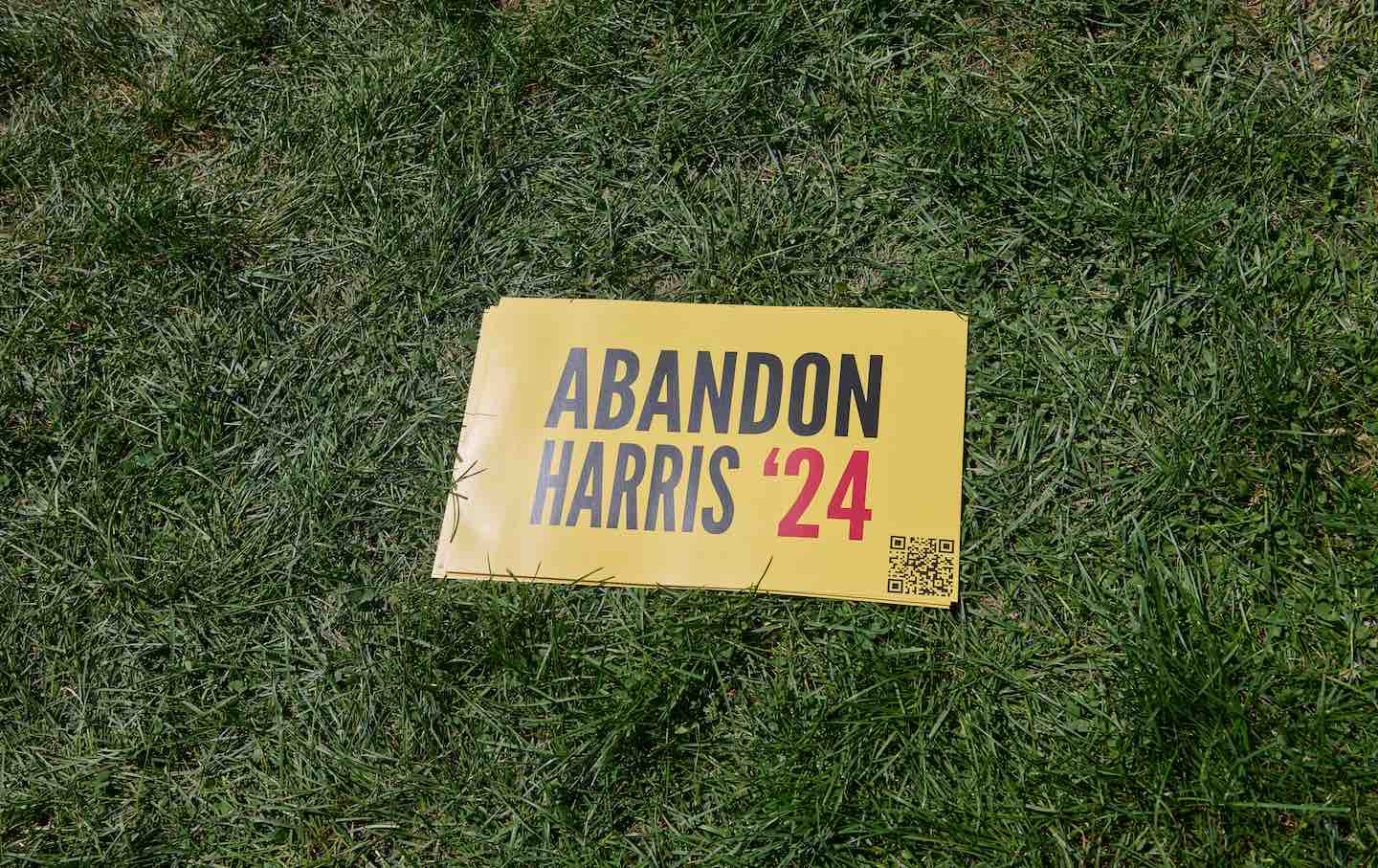
How Did the Democrats Get Here? How Did the Democrats Get Here?
Talking with Tim Shenk about party realignment, the tainted legacy of 1990s political consultants, the 2024 election, and his new book, Left Adrift: What Happened to Liberal Polit...
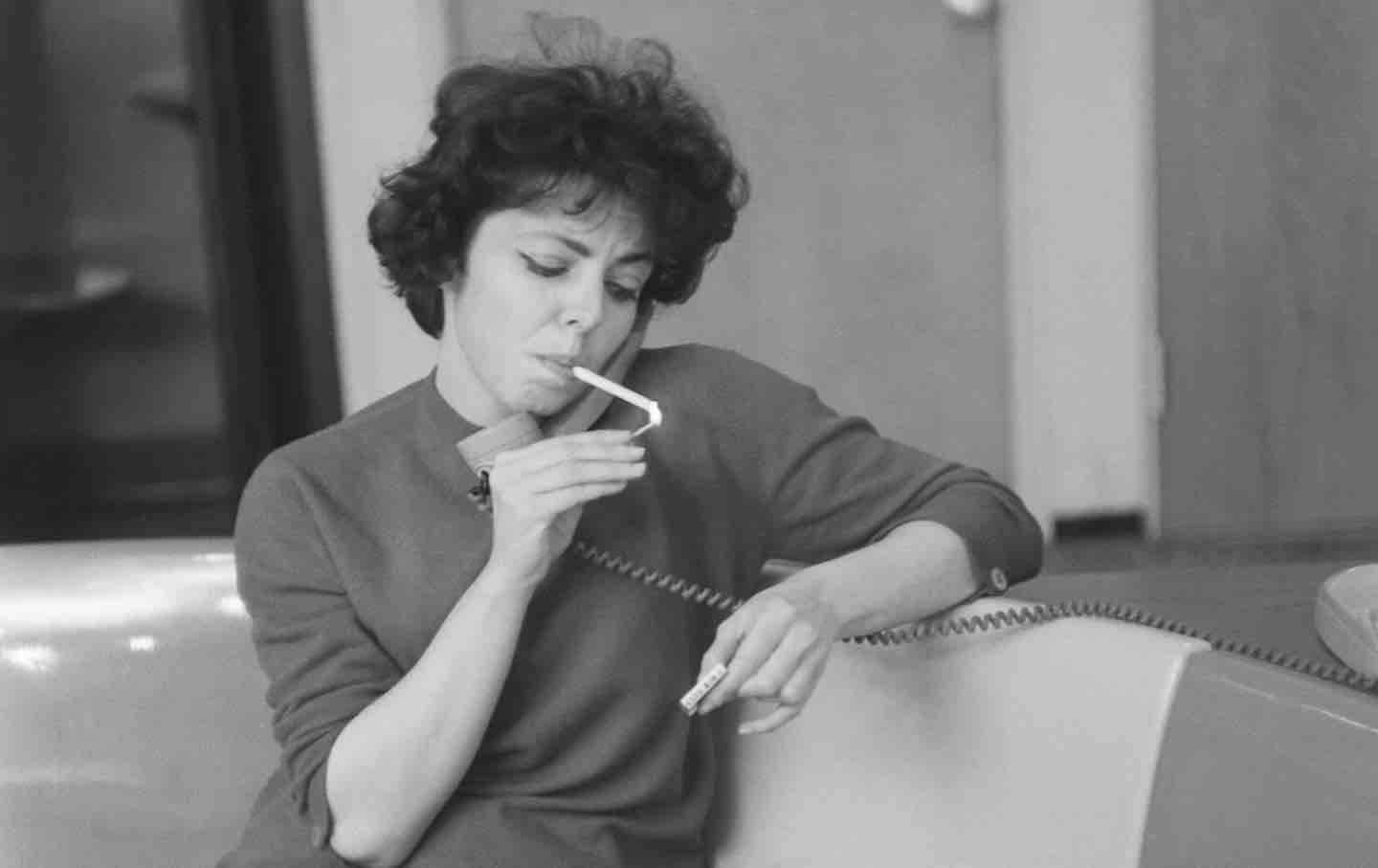
The Irrepressible Elaine May The Irrepressible Elaine May
Her films reveled in the possibility of capturing the spontaneous beauty of improvisation.
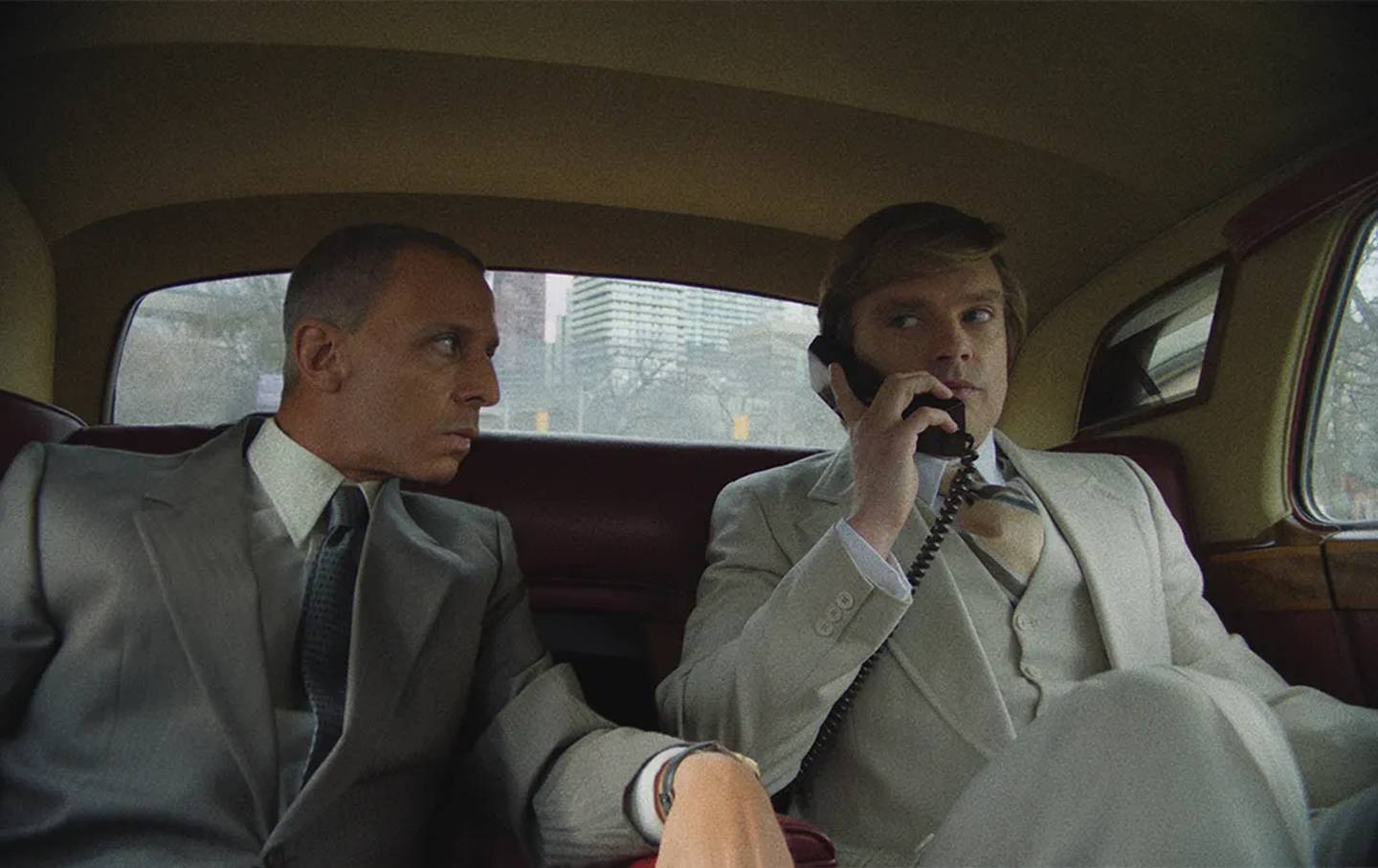
The Apprenticeship of Donald Trump The Apprenticeship of Donald Trump
A new film examines Trump's formative years under the tutelage of Roy Cohn.

Telling the Amazon Labor Union’s Story Telling the Amazon Labor Union’s Story
Union, a new documentary about organizing at a Staten Island Amazon warehouse, grapples with what it means to tell an underdog story without a satisfying ending.
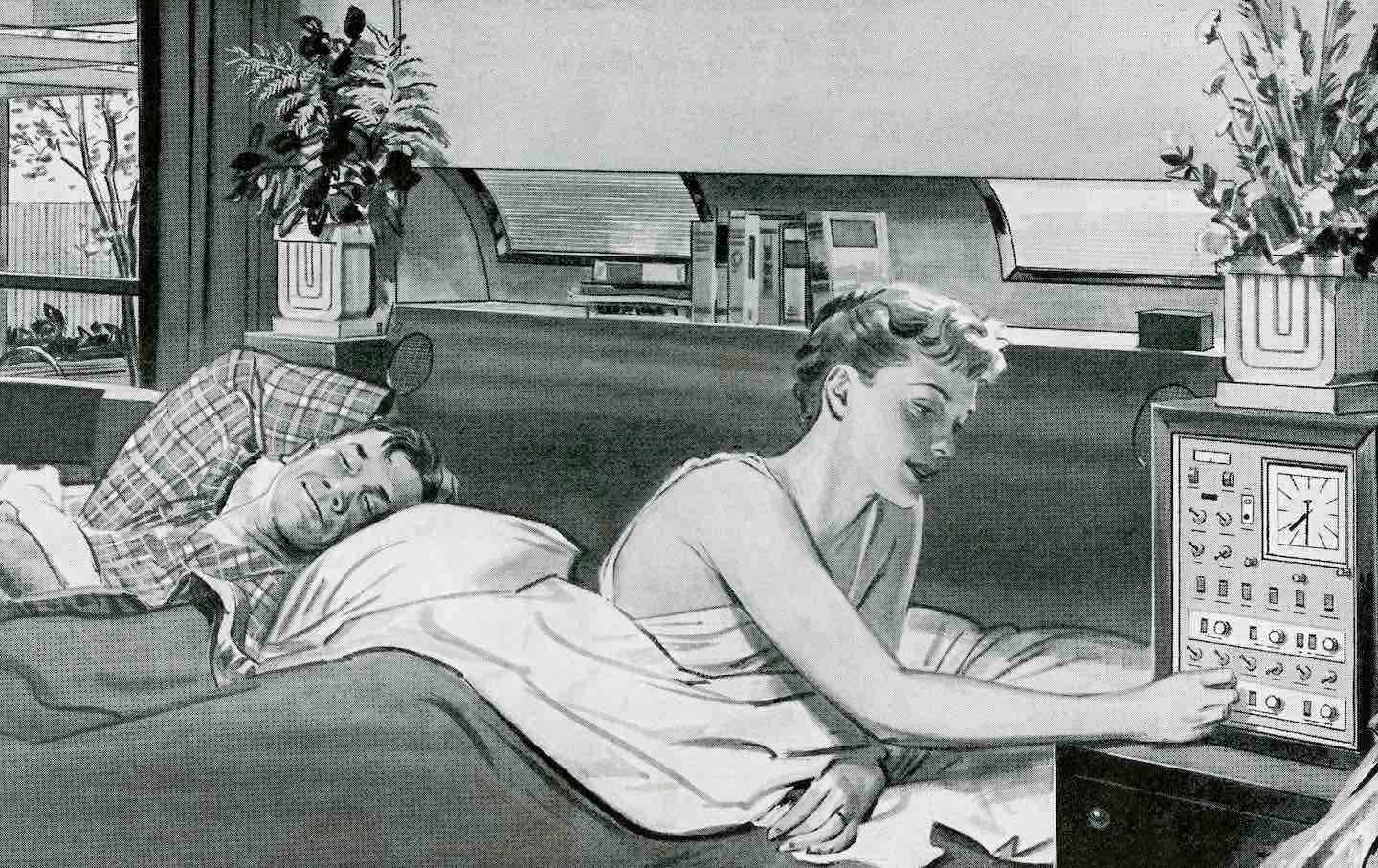
The Crisis in the Care Economy The Crisis in the Care Economy
How was care commodified? And what has that meant for an undervalued but increasingly important workforce.

The Magic and Mischief of Xi Xi The Magic and Mischief of Xi Xi
Her penchant for transforming taboo subjects—death, illness, or gender—into fodder for intellectual delight made her one of Hong Kong's great writers.


